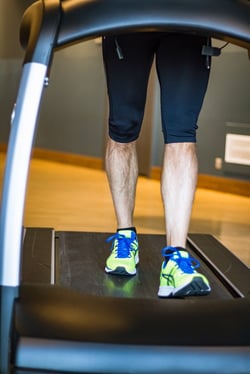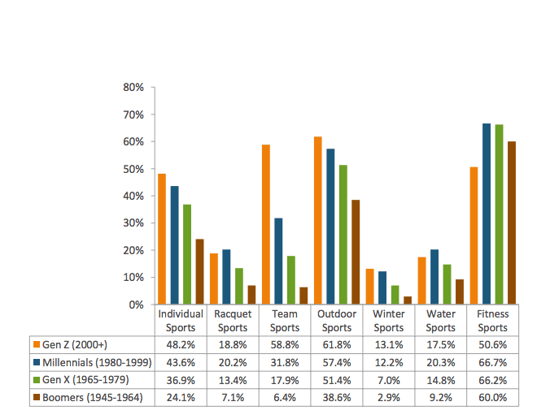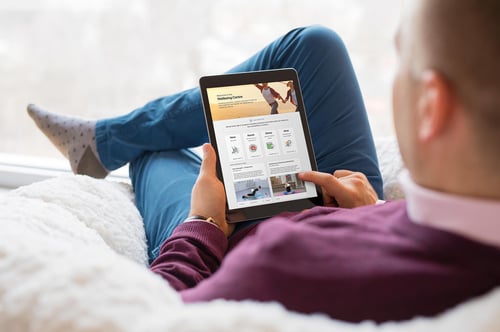
7 min read
Before you know it, it'll be time for your New Year's resolutions, and when time comes, I guarantee you one of the top pledges your employees will make will be to improve their health.
Research from Radarly shows us that in 2016, the three most cited New Year’s Resolutions in the UK were all related to physical wellbeing:
- Exercise more (22%)
- Eat more healthily (19%)
- Drink less (17%)
Sadly, reports are showing that only about 10% of your employees will stick to these resolutions, so choose wisely when deciding what support to give your people for the best chance of success. You'll almost certainly have heard by now that when it comes to implementing an employee wellbeing strategy for your business, it's important to steer clear of a one-size-fits-all solution and instead provide something that meets the need of each individual.
A good place to start in considering the different needs of your employees is to examine the different generation profiles of who’s working for you because we see very different exercise preferences across the different age groups.
Once you understand these differences, you’ll be able to more easily address the physical activity needs of each and every one of your employees.
 Group 1: Baby Boomers
Group 1: Baby Boomers
So let’s start with your older employees: research from Mintel shows that while millennials make up the greatest proportion of gym and health club members, it is in fact the older generations who get to the gym more frequently. In fact last year Nuffield Health released an article, which revealed that that their older members were convincingly beating the youngsters when it came to frequency of visits (twice more per month than Generation X and the Millennials).
Not only are they there more often, we also see a correlation with how long the older generations spend on their exercise sessions:
They tend to frequent classes of an hour or more in duration, such as long "steady state" sessions on the bike and machine weight workouts (which usually take longer than free weight and body weight workouts). So we can see that your boomers are happy to put the time in to get the results!
Give employees access to wellbeing advice and articles best suited for their needs with Reward Gateway's wellbeing hub.
Group 2: The Millennials
So looking at the Millennials, is it really the case that they’re less committed to exercise than their elders? Well, according to The GBrief, it’s more a case that these folk shun traditional types of gym workout in favour of shorter, whole body workouts, classes that encourage socialising and activities that emphasise the fun of movement. Indeed 81% of millennials say that they exercise regularly, compared to 61% of Boomers (Brightmark Consulting, 2015), so perhaps it’s more a case that this generation also looks for options to get their exercise in places other than the gym.
The 2016 Participation Report (Physical Activity Council) has also shed some light on this as it shows that younger generations demonstrate a much fonder interest in nearly all types of sport:

Need another way to get your millennials to participate in a wellbeing initiative? According to BizJournals.com, millennials love the challenge of overcoming obstacles and being forced out of their comfort zone, and a collaborative activity like helping others achieve their goals.
 Group 3: Generation X
Group 3: Generation X
Sandwiched between the Baby Boomers and Millennials, our Generation X’ers tend to lean more towards the younger generation in their preferences. In IDEA’s report “From Slackers to Stars,” Sheri McMillan says that this generation has the maturity to engage with the more traditional exercise preferences of the Baby Boomers or “at least...think we’re cool and hip enough” to engage with the more progressive exercise habits of the millennials. In the same report, Stacey Lei Krauss also explains how the mindset of the Gen X exerciser has developed over the years, moving from “no pain, no gain” to “smarter, not harder,” incorporating a more holistic and less aesthetic approach than once would have been their preference. So a decade ago, Gen X would’ve have been training and exercising simply to look good, or purely to lose weight, but they’ve transitioned to exercising with a broader mindset to approach goals, such as overall wellbeing.
As you consider what kind of physical activities make sense to offer your employees as a benefit, take a look at your demographics first so you can choose where to invest your money.
A wellbeing solution that gives your employees access to a variety of employee wellbeing choices, whether ongoing advice and articles about ways to improve wellbeing, or discounts at popular wellness stores can help jumpstart your focus on wellbeing programmes.

 Fergus McIntosh
Fergus McIntosh

 Group 1: Baby Boomers
Group 1: Baby Boomers
 Group 3: Generation X
Group 3: Generation X